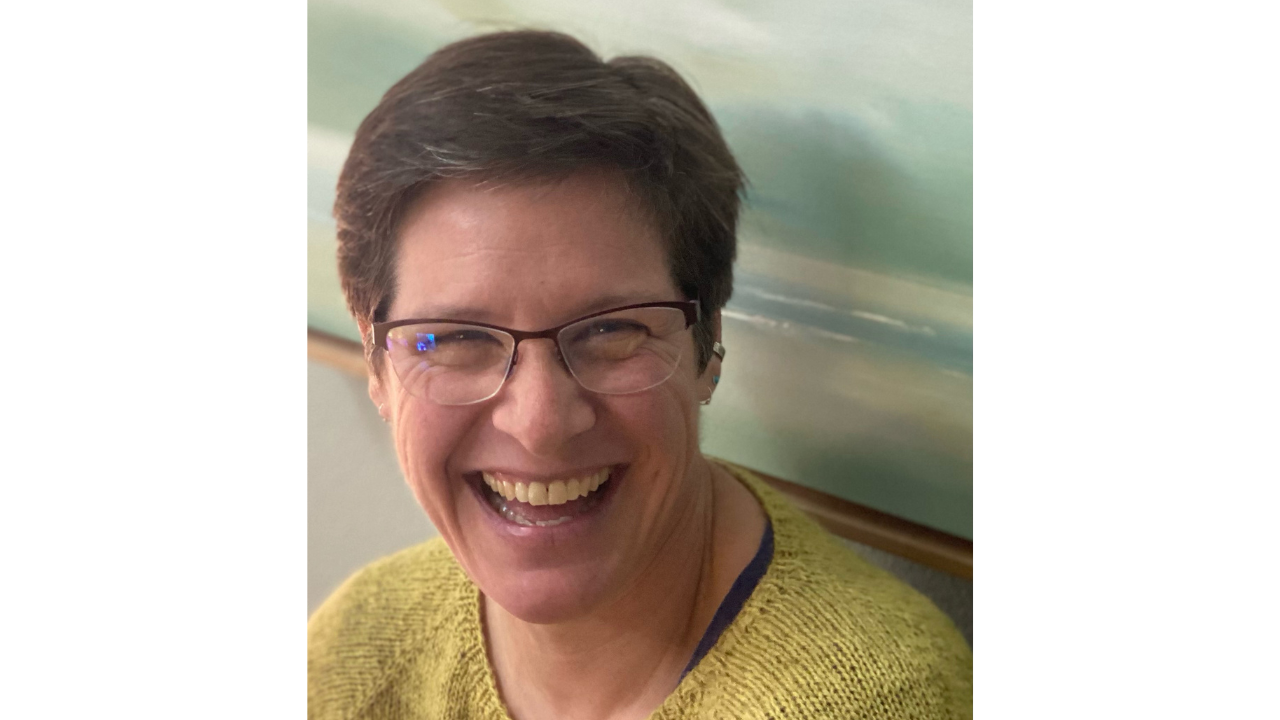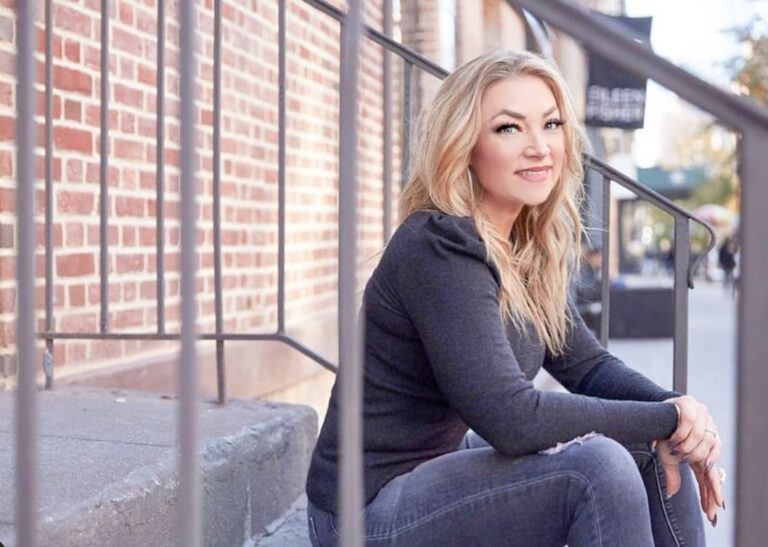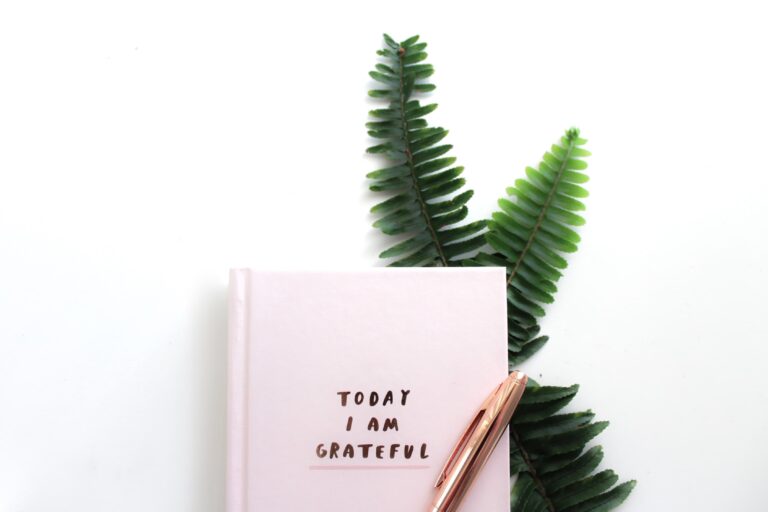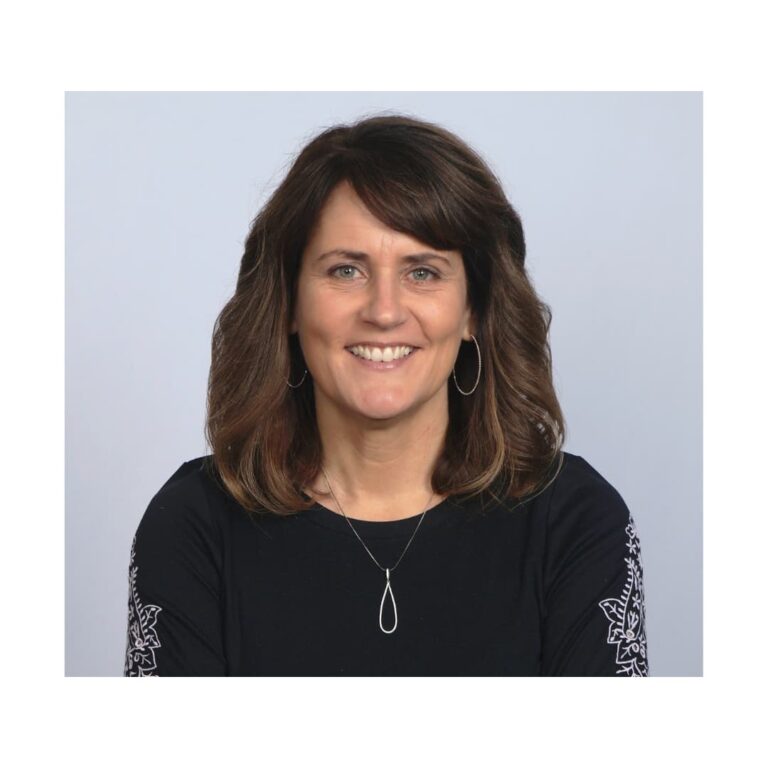Exploring Grief Through Drawing: Finding Comfort in Art and Creativity
When Jessica Schaffer lost her partner Patrice in March 2021, she began exploring grief through drawing. In Jessica’s quest to cope with her devastating loss and search for a new sense of direction, emerging creative impulses led her to channel her emotions into art. This journey through grief and artistry blossomed into a business, where she now creates greeting cards and artwork that provide profound, relatable messages for those navigating significant life challenges.
As Jessica delved deeper into her art, she discovered that her drawings could capture emotions that words often failed to express. Her art not only expressed her own pain, but also connected with others going through similar journeys. This realization inspired her to establish The Chrysalis Imagery, a platform where her personal healing process could extend to support and inspire others. Words often fail us when we’re looking to provide comfort and support to someone in need, so she helps those who struggle to find the right words during tough times.
Key topics in this episode include:
- The societal pressure to present curated, glamorous lives versus the reality of grief and loss
- Redefining resilience with a broader definition that includes allowing oneself to fall apart and take time for healing
- Finding moments of safety by anchoring towards tangible physical sensations as a coping mechanism
Learn tangible ways to cope with loss, the importance of self-care, and how creativity can transform grief into something beautiful.
Listen to the Full Episode
Links + Resources From This Episode
- The Chrysalis Imagery
- Jessica’s Journals
- Are you searching for emotional support, practical advice, and guidance on navigating widowhood? Join us in the Widow Squad membership.
“If we can expand our definition of resilience to include spaciousness around those experiences of our humanity, we become so much more resilient.”
Episode Transcript
Melissa: I’m joined today by Jessica Schaffer, founder of The Chrysalis Imagery, a unique line of greeting cards and stationery inspired by her journey through grief after losing her partner in 2021. We discuss tangible ways to cope with loss, the importance of self-care, and how creativity can transform grief into something beautiful. Let’s get started!
I’m so glad that you’re here with us on the Widow Squad podcast, Jessica! I want to talk to you about your business first. But before that, I’d really like to get to know you and maybe a little about your story and just kind of your life before and your life now.
From Loss to Creative Revelation
Jessica: Well, let’s see. What do I want to say about my life before? So, I was partnered with the most beautiful woman for 25 years. We were friends for a couple of years before that, so Patrice was in my life for 27 years. She was the love of my life. We were very well mated, and our lives together were very complete. She died in March 2021. Anyone who’s lost a primary person in their life knows that was such a big seismic shift for me.
One thing that has happened for me in my grief journey is this whole kind of cellular reorganization. I stepped into a brand-new identity in the professional world while I was kind of catching up with the fact that I’d lost my person. I spent 30 years as a wellness practitioner. I was originally a body worker, and then I taught Reiki for about 20 years. And the last 10 years of my life, before now, I was a nervous system health educator and mentor. So, I was in the business of holding space for people going through life transitions. And in my grief journey, I discovered a totally unexpected talent that I did not know existed.
I was 52 when Patrice died, and I discovered I could draw. And it was a very surprising experience. Drawing became a way for me to process some of the deeper experiences I was having in that first year of acute grief. What’s happened in that unfolding is that I ended up starting a greeting card line, and my passion with what I’m doing now is about educating people how to support their loved ones going through the tougher parts of life. With messages that are real and relatable that provide ways of naming, normalizing, and navigating adversity. So, loss, death, but not just grief cards. Really, just like, how do we show up and celebrate the complexity of our humanness?
In a nutshell, that’s my before and after.
Melissa: Okay. Well, I have got lots of questions. And one of them that comes up when you’re telling your story, is how did you know you had a skill for drawing? How did that happen all of a sudden? Did you just pick up a pen and paper? How did that come about for you?
Jessica: That’s a great question. The byline of my company is “real messages for people going through real things. One day in the fall of 2020, I was dreaming out loud, and I just said to Patrice, “gosh, I wish I could draw on an iPad. That would be so fun.” It was so random, and I never thought anything about it, but she heard something about it.
Even though we didn’t have a lot of resources, she went out and she got me an iPad as an early holiday gift. She surprised me with it. She gave it to me early because she wanted me to follow that musing that I had. Two weeks after she gave it to me, we found out she was dying. So this was the last physical gift that she gave me. Obviously, in the first months of my grieving, I wasn’t thinking about an iPad. But one thing that happened to me kind of early on within those first, maybe four, five, or six months, is there was an image that kept showing up. It started in my dream time, and it was just kind of cycling in the back of my consciousness during the day. And at some point, the image just got so persistent. It was an image with words, and the image was of this woman lying on her back, floating in deep, deep water. And suspended in the water below her vertically was a humpback whale.
And the words that went with it were, “no matter how untethered and alone you feel, there’s a deeper mystery holding you.” This was a persistent kind of thing inside of me, and I was so irritated by it I picked up the iPad and I took a little course to learn how to work it. And it was in that process that I discovered I could draw. I could draw fruit, and I got really excited about drawing apples and peaches and pears. And then I started drawing animals. Then maybe about six months later, I started drawing some of these images that were coming to me in a liminal space that were more complex. And that’s how the card line started to birth itself. So, I like to think that the seeds of my almost 30 years with Patrice are in this new iteration that’s unfolding because she heard something.
She gave me the vehicle that became an opening for me to explore a thing that I seriously thought I had zero talent for drawing. She was always the one that would doodle on birthday cards for friends, you know, and she was really good at it. She was very playful and witty. So it feels like there’s some magic in it. I really like holding on to that storyline. It feels like a very comforting talisman to guide me.
Melissa: Right. Yeah. I mean, she’s your person, and she also had your back because she heard something about you or something that you said that you just thought was some innocuous little comment or whatever. But she’s like, no, I know that you’ve got this in you and then supporting you by purchasing that. So, yeah, she’s totally a part of this. She is totally part of this. I love that.
Jessica: One of the vows that we made when we married each other is that we would always support the deeper truth of whatever was expressed through us that would help us become fuller expressions of ourselves. And that was a reflection that we offered back to one another over the years. I think this was one of those experiences where she heard the truth and a thing that I thought was nothing, but certainly has come to be something very significant to me in this kind of early chapter of my grieving.
Balancing Imagery and Words: Exploring Grief Through Drawing
Melissa: So there’s two parts to this. You have the imagery. That’s what you draw, and then you have the other part, which are the messages, the words, because what I’m finding in our society is we’re pretty grief illiterate.
Jessica: Yes.
Melissa: There’s some literacy that needs to be happening. Just how to talk about the messy things, how to talk about the adversity, how to not just talk about the sunshine and rainbows, or whatever, or even the sympathy cards that are the standard sympathy cards that are out there. I received a lot of them. You received a lot of them after our partner’s death. And, you know, they could use some work.
How do you manage that? How do you manage the creativity between the images and the words?
Jessica: I don’t know where it happens. You know? Like, how do we know the mystery of things? We can’t, it’s ineffable. Right? Like, it’s beyond words sometimes. Sometimes I have images that come through. Sometimes I have the words and I wait for the imagery. Sometimes they come together. But there’s always a lot of intentionality behind what I’m creating. So, I don’t just consciously say “I’m gonna draw this.”
It’s not like a willful thing. There’s usually some kind of inspiration that’s prompting it. So, I feel like there’s some layer of medicine that’s happening here because it feels like it’s coming through me rather than coming from me. I’m not an artist. Like a lot of artists, you know, their passion is in creating. I love creating, but it feels like it’s more of a communion than sitting down to draw and create just for the sake of creating. Maybe other artists would say that’s true for them as well. But I totally agree with you about how unschooled we are.
It’s not handling subjects like death and mortality and loss and grief. It’s just adversity in general. I think we’ve only become, ironically, more unschooled. I think we live in these very curated worlds now because they’re so skewed by the story lines and narratives that get played out on social media. I launched the chrysalis imagery in July of 2022. And it’s been a labor of love to get the messaging that I believe in out into the world. And one of the places where I feel like there’s the biggest gap is for retailers who are afraid of these messages and afraid that they’re not going to sell.
I frequently will tell folks, these are the cards that your customers don’t realize that they need yet, but they will be so grateful to have these because life comes knocking invariably. It comes knocking on our door. Sometimes it knocks really hard and really persistently. And the world that I live in and anyone that I know in my world is experiencing that. So, I do have this passion of wanting to help people learn how to show up to support loved ones through any kind of adversity. And I think how we do that is we start getting comfortable being uncomfortable, and we start getting comfortable realizing that there are no perfect words. And if we are looking for perfect words, we’re actually going to get in the way of the really important thing happening, which is letting a person know, I see that this is so hard and I love you.
That’s really what we want to say. That’s pretty much all we need to say.
Melissa: I don’t need to write a book or tell you about my personal experience with loss or whatever because often, those don’t match up, and the receiver doesn’t really need to hear that. But I love the fact that I can find a card or a prompt when I’m feeling like I want to help my friend. What should I do? Then I see this card and I’m like, okay, this kind of sums it up. Yes.
And then maybe I can write a few more sentences after that and sign my name just to acknowledge and witness that they are having a hard time. They are moving through something really, really yucky, and I just want to acknowledge, “hey, I see you.”
Jessica: I think that’s it. The naming is everything, and that’s the piece that we’re so unprepared for culturally. We just want to name it. We tend to name it with humor or sarcasm.
And I’m not knocking humor or sarcasm. I love humor and sarcasm. I laugh at life and myself every day. But if the only way that we can talk about adversity is by dressing it up and making it funny or biting, that says something about our culture, and it says something about our social fabric being frayed. Because adversity should be recognized as part of life. We should know how to hold space for it and not be uncomfortable with it. And so it really is that simple.
It’s just the naming and normalizing, which is validation in and of itself. What I’m trying to do with these cards is create a space where there’s enough of a prompt to allow a person to have the courage to follow through with a couple of very simple statements of support and love. And also, really conscious that all of our journeys through adversity are different. So, trying to name and normalize that it can look a lot of different ways, including really messy. Transformation is not romantic. It’s really hard work. It’s really gritty work. Sometimes it feels like we’re not gonna survive the experience.
So I’m making space for some of those layers of complexity and truth to just be more commonplace.
Melissa: Yeah, exactly. I mean, nobody comes out of this unscathed. You know? We’re all messy, messy, lovely humans and in this messy life, with all different kinds of experiences, it runs the gamut. But just normalizing those experiences or conversations or just acknowledging that I may not understand what’s happening with you, but I see that you’re struggling, or I want to just provide some kind of comfort or acknowledgment or witness to what you’re experiencing. So, I love that. I love that you’re doing that. And you are in retailers and some pretty decent sized retailers here in Oregon. So let’s spread it out to the entire world if we can.
I mean, it is so needed. I find it interesting that you say retailers are like, “I don’t know. Our buyers might be kind of uncomfortable.” It’s like, no. They need the prompt. They need the thing. They don’t even know that they need it, you know, until they see it.
Jessica: They don’t know.
I’ve had really interesting responses. Like, I’ve had some retailers say, “those make me too sad. I don’t want to look at them.” It’s this little Catch 22 we’re in where we want to live those curated lives that are glamor and champagne and whatever and life is bliss and it’s always flowing. We’re caught in between sort of that false narrative and the reality. I mean, there’s a little bit in between these two things.
It always blows my mind, though, that even after living through the early days of the pandemic where millions of people died worldwide, that we’re still so resistant. Because I don’t really know anyone’s life who wasn’t touched deeply by those first few years of COVID. I sort of thought, okay, well, the tide is turning a little bit, but, you know, belief systems don’t change quickly.
Melissa: No. They don’t. We were just all hit over the head with this, you know, and just grief and the concept of grief. I’m grieving the loss of my job or my community or the whole pandemic. It was just a whole big grief experience.
Jessica: People want to go back to normal. Well, the big tagline with grief is you don’t go back to normal. But I think it takes a long time to really integrate and digest and process the reality that you don’t get to go back. That is a big part for me and my personal experience of grief. Of metabolizing this new reality and how long it takes to catch up to your cellular understanding of the concept you had and that they’re different time zones.
Melissa: Different time zones. That’s a great way to put that.
The Role of Wellness Practices in Grieving and Healing
Melissa: I have another question about your life as a wellness practitioner. How did that help you? Was it through self-care or making yourself feel better? Can you walk us through your experience? I’m a Reiki practitioner too, and I don’t do anything with it. I just did it because I wanted to feel good. I just learned it because it was fascinating, but I don’t didn’t do anything with it. But if you could tell me a little bit more about how that helped you.
Jessica: I mean, that was huge for me in terms of internal resourcing, not just the aftermath of Patrice’s death, but the journey of her death. It was about a two-and-a-half-month process from the time she told me what was going on to her death. I midwifed that process at home. We had hospice the last two weeks of her life, but it was a really intense period. I don’t really know how I did it, but I was still working while that was going on, because I had to because there was no financial safety net for me. But, yes, I mean, all the years that I taught, whether it was Reiki or it was the somatic and educational wellness model I created called nervous system reset. There are still people I’ve trained who are practicing it, even though I’m no longer doing that work. Those skills, the Reiki and the nervous system reset, I’ve always practiced. There was never any way to teach what I was teaching unless I was living it.
So all of that was really deeply embedded in me. And, yes, I credit all of that for helping me from an internal place know how to meet the overwhelm that I was experiencing to help me learn how to pace through this, you know, kind of unimaginable load emotionally. In my grieving, it really has been what I’ve leaned on to help me through these first three years of just digesting and processing. Of course, I also had people in my life who love me, and that’s been really important as well. But a lot of my journey has been in a deep and very internal solitary place as well. So, yeah, I am so grateful that I spent the last 30 years educating people in that way and practicing because my practice was really there to catch me. I think when Patrice was dying, I really got to such a deep level of how important this work is. I knew it worked, but I don’t feel like I would have survived what I was living through if I wasn’t able to practice self-care.
Melissa: Sounds like a lot of self-care.
Jessica: A lot of self care. Because there’s nobody else who’s gonna take care of me.
When you face that aloneness, it’s like, well, this is your safety net. So how do you want to resource yourself? How do you want to move forward?
Melissa: After Dave died, I was trying to support myself because I was not taking good care of myself.
I was seeking out Reiki, or anything that I thought could help. I was just very, very curious. And that was something that really supported me. Because I’m like, I need to feel better. I don’t know if this is gonna make me feel better, but I’m gonna try it.
Jessica: I’m so glad that you were open to that. And that you were curious and open and willing to explore. Because some people don’t know that those resources are available. I was lucky that I’d lived 30 years in that space, and so it was second nature to me.
Melissa: So almost like a toolkit or a toolbox or something. You had tools; I had tools. In your tool kit, was there anything that you felt was really supportive? Something some of our listeners could tap into, like, maybe an idea or something they may not have thought of.
Jessica: Yeah. There are a few things. One of the ways is how our nervous systems orient to safety, even when our life has been completely shattered and there is no safety to be found. We can still find little, tiny moments of safety. One of the ways that we do that is by anchoring towards a really tangible physical sensation. And we’re all really different in terms of what works for us. But for some of us, it might be holding something like a stone or a balled-up pair of socks.
Or for some of us, it’s the feeling of the air on our face, the wind on our face. For some of us, it might be temperature, like a cool washcloth that we put against our body. For some of us, it’s movement. So just letting our body sway a little, having something in our hands that we’re moving back and forth.
Find a really tangible physical sensation that you can pay attention to and really focus on. Even if you do a few seconds of that throughout the day, you’re gonna help your body begin to orient back towards the possibility of safety which I think is really important.
From a personal standpoint, the things that have been the most resourceful for me are I’m lucky to live in this really beautiful area. I live here intentionally because nature for me and being in natural spaces is the thing that keeps me sane. It’s what sustains me. I walked a lot. My two dogs and I would just go out and walk for hours. And being outside, being by the ocean, being in the forest, listening to the sounds of nature, that was what I could do. That was what grounded me.
And then the other thing that I had, which showed up about six months into my initial loss, was the drawing and that the drawing was the space of communion. It was a space where I had the first hint that I might be able to find my way back towards the possibility of joy. That particular creative outlet became a place where I could find some solace. So those are the things that come to mind around that.
Melissa: It sounds very calming. Like calming your nervous system or calming yourself. I love you found this way to be creative and also really supportive and helpful to others.
Jessica: I’m one of those people that I don’t know how to do a thing in the world if it doesn’t have a focus of service. For me, there’s no difference in my personal self, my professional self, and the work that I do in the world. It always has to be aligned, or it just doesn’t work. hope that the path that I’m following has a value that the world is extracting from it.
Melissa: Oh, I find it valuable.
Messages That Resonate with Widows
Melissa: I was checking out some of the cards and the messages on your website. I’m gonna put you on the spot. Are there a few cards or messages that really you think would resonate with our widowed audience?
Jessica: I think there are a ton. The very first image that kind of launched everything is that idea of no matter how alone and untethered you feel, there is some deeper mystery holding you. I’m extrapolating that my experience is an experience that most folks who are widowed go through.
But for me, the overwhelm of being in the world without the person who has anchored you was so overwhelming. It’s taken me three years to really seriously catch up with that first moment of reckoning. I think this was a thing that I didn’t really realize about widowhood. Of course, you know things take time. Grief has its own timeline. But then you go through your first year, and then you can’t possibly know in that first year what it’s gonna be like in the third year. In that first year, if somebody had told me that my third year would have been harder than my first year, I would have been like, what? That makes no sense. But just this idea that it takes so much time to catch up with that layer of meeting your aloneness. So that’s one message that shows up. I have a card that says, “you don’t have to push through. You can pace through.”
I have a card that feels really appropriate to me today. It was my pick for today, in part because of what I see going on around me with a lot of my friends. But I have one card that shows a body under the covers, and the arms and the feet are sticking out. And it says “sometimes the best medicine is to pull the covers over our heads.”
We use the word resilience in our culture, and what most people think it means is that we’re just, going to get back up on the horse and keep going, and we’re gonna stay positive, and we’re just going to make it work. And that’s not really what resilience means. That would be more like grit or endurance. Resilience is the ability to meet whatever’s coming our way, to rise and fall with it. And sometimes resilience looks like pulling the covers over your head and giving yourself permission to take that time out because you are totally overwhelmed.
In that moment or that day, you can’t do more than that. Sometimes it looks like falling apart and being a mess. Right? Sometimes it looks like saying, “I can’t.” If we can expand our definition of resilience to include spaciousness around those experiences of our humanity, we become so much more resilient. If we give ourselves permission to take the time out and pull the covers over our head, whether it’s literal or metaphorical, then we find not that long later, it might be an hour later, it might be a day later, that we can get up and we can take that step forward that we couldn’t take when we tried to do it 24 hours earlier or a week earlier. I think any kind of messaging like that is important, particularly for early widowhood, because I think we can put a lot of pressure on ourselves that there’s a right way to grieve. Or that there’s a timeline and there’s not.
Melissa: No. There’s not. I know. Sorry, everybody.
Jessica: Tell me, what is the formula? What is the equation?
Melissa: Give me the homework and the guidebook, please. I mean, that’s what I wanted. And I’m like, “gosh. There’s no homework?”
Jessica: There’s no manual.
Melissa: I know. We have a private community group, and we often talk about treating ourselves like toddlers. Asking yourself, well, what do I need right now? I think I need a nap. Or what do I need right this very moment? I need to drink some water or just take these little baby steps or eat pizza or whatever, or I need to lie in my bed for a day and put the covers over my head, you know?
What do you need right now? I know you’re having a tantrum or whatever. What do you need? Then do that. And you’re trying to be open to whatever comes up, whatever that answer is.
Jessica: It’s been really interesting for me to watch the messaging that’s coming through right in the first year and the second year of this. And more of the messaging lately is about kind of opening to the idea that the outcome is uncertain, but the possibilities are endless. You never know what unexpected magic the day might bring. And so, it’s been a really interesting iteration or evolution to watch these messages that are coming through me, and they all come from my lived experience.
Melissa: I have to say kudos to you for just being open to whatever was calling your soul during that time. Where it’s like, I can draw. This makes me feel good. These messages are coming through me. I’m gonna do something with that and just listen and act on it. And I think that’s really beautiful that you’re just feeding your own soul.
You’re having your own back. You’re doing what makes you feel fulfilled and good. And I think that’s just lovely. And then you’re sharing it with the world. I think that’s amazing.
Jessica: I mean, that’s a really tall order to figure out who you are after such a seismic shift.
Melissa: It’s such a journey for all of us.
Jessica: The journey itself was brutal and I’m grateful for every piece of it. But just really my heart going out to anyone who’s gone through this or is going through it or sort of staring the firing squad down. Like, who’s on the precipice of this experience? There are people in my life who are on the precipice, and I’m watching the terror being stirred for them and just feeling in my heart with so much sincerity that I understand. i just always try to hold that with tenderness and spaciousness.
Melissa: We all know that look or we all know that nod of the head, like, yeah, we’re feeling this. Even though everybody’s experience and journey is unique, we’re just nodding our heads like, yes, we feel that we were with you. You know?
Jessica: I think what we share in common, even though there are all those unique layers of experience, what we share in common is that human experience of losing that social anchoring.
And touching into that really deep and complex psychology of being on your own, even when you have a community of support around you. There’s just something that’s so hard to put in words about that experience, and I think that is the piece that is common for all of us who have lost some deep importance in our lives.
Melissa: It’s like losing the future. You had developed or talked about this future that you’re gonna have, or you’re working on goals or steps to take to or saving money for a trip or whatever. You had this future, this movie that was playing, and then that person isn’t there anymore. So that future is gone. You have to create a new future. And that’s daunting.
Jessica: I love how you frame that, Melissa. I’ve actually never really thought about it that way, but that’s really helpful to me personally, just in understanding a little bit about my journey. I know everybody does it differently, but for me, I’ve really found I have to go to new spaces and new experiences. Going back doesn’t work for me. But it really makes sense when I think of it in that framework of having lost your sense of future.
Wrap Up
Melissa: We can talk and talk and talk all day long. I’d rather be at the beach with you!
Jessica: You have to come. We’ll have tea and a nice long walk.
Melissa: Oh, I’d love that.
As we wrap up, I just want to make sure I highlight what you’re doing. If there’s something that’s really lighting you up or something that you’re working on right now, if you could share that with us and then also share where people and find you and the work that you’re doing.
Jessica: What always lights me up are the new creations coming through. Within the last nine months, I have 127 product designs. Of those, 116 are greeting cards, and although they are deeply skewed towards messages of encouragement and inspiration, I have greeting cards for everything. So, categories like love and appreciation and birthdays and holidays and art cards. I’m also really excited because I’m heading to my first wholesale trade show. I sell directly to consumers online and I also sell wholesale. I’m going to my first wholesale trade show in two weeks.
I have two new product lines that I’ve been working on all winter, and I’m releasing in April. One of them is a series of sticky notes. I know that sounds so silly, but I created these sweet sticky notes that have these beautiful images and sentiments on them. Because I just thought, you know, I need notes.
I use my phone all the time, but I also need physical notes that I can stick everywhere. And I was like, why wouldn’t I want something beautiful that had a reminder that was inspiring and encouraging? So I created this line of sticky notes that I’m really excited about.
I also created this line of journals that I’m printing right now in British Columbia, and they’re going be shipped to me next week. It’s by far the most complex product that I brought to the table, but I’m so touched by these journals. Actually, I’m quite emotional sharing this. This is the first time I’ve talked in a public space about them, but I have 5 different designs. The journal collection is called A Soft Place to Land Journal Collection. Every single one of these designs actually was a true experience that I had.
They represent some of the most sacred experiences I’ve had. And I wanted to create a space that was simple but evocative that would be a sacred marker for people to do their deeper processing. The pages are blank, but they’re really, really beautiful. I can’t wait to meet them.
I feel like they’re these little babies that I’ve been nurturing into being. I didn’t actually believe that it would happen until it happened. So I’m really excited about that. And I think for your community, that might also be something that will resonate. Because the artwork is really special because it’s so very deeply personal.
Melissa: Well, journaling is huge. That is something that we talk about a lot, and we offer a lot of prompts and just talking about the importance of getting it out of your head and onto paper.. So journaling and journals are a fantastic place for that. And when you were talking about the journals, I got goosebumps. I always listen to my goosebumps.
Jessica: In terms of where people can find me, my company name is The Chrysalis Imagery. And my website is the chrysalisimagery.com, and social handles are the chrysalis imagery as well. So people can find me, and like I said, I sell direct to consumer online. People find me on social media and usually order from me.
And if there are people out there who are retailers that are looking for an interesting line for their shop, I also do wholesale either through my website or I’m on fair.com, which is an email.
Melissa: We’ll share all of this information in the show notes. I cannot wait to see the journals. As I’m staring at my five different packs of sticky notes on my desk right now, I’m a lover of the sticky notes. I can’t wait for those either.
It’s really been fantastic catching up with you.
Jessica: Thank you so much for inviting me. I just love what you’re doing. I love the idea that there’s a Widow Squad. A place to land where you’re amongst people who can handle and hold the complexity of that journey. So, thank you for the work that you do with your partner in this endeavor of yours.
Melissa: Well, thank you. I love what you’re doing, too. So let’s keep in touch.







